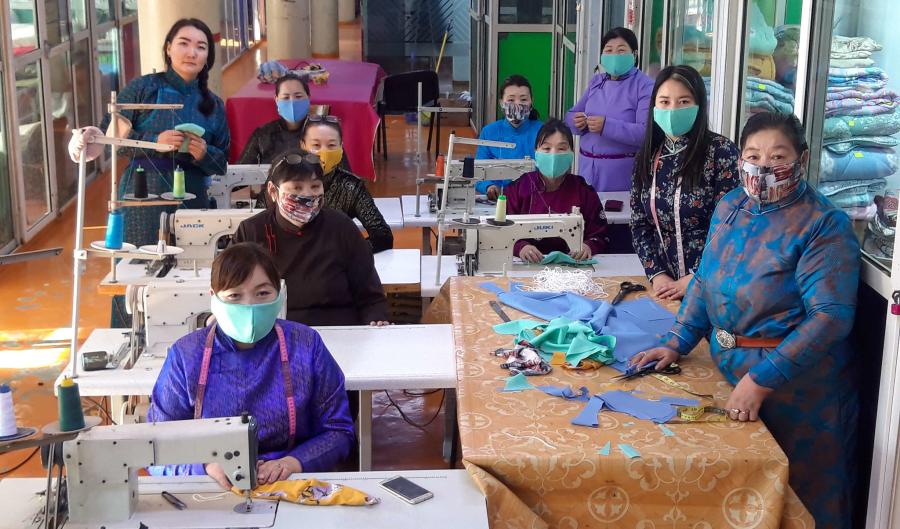Climbing to the top of Baga Gazrin Uul you look out over an expanse of land uninterrupted as far as the eye can see. The only breaks in these plains are the small tent structures or gers used by the nomads of Mongolia. In a country where the population density is one of the lowest in the world, the ger will appear as a white speck on the open landscape.
The site of Baga Gazaryn Chuluu (BGC) is characterized by an extrusive granite ridge rising 300 meters above the surrounding plain and having surface, spring, and well water resources concentrated in outlying foothills. Nomads have been stopping here for at least 4,000 years. The only privately owned lands in Mongolia are in and around Ulaanbaatar, allowing nomads in and around BGC to move freely and camp in places they deem ideal. This section of the steppe is a principal place for a grazing and setting up summer camps, making it an area of extensive archaeological remains.
The United Nations describes indigenous peoples has those who have a historical continuity with pre-colonial societies and who consider themselves distinct from other sectors of the societies now prevailing in those territories or parts of them. They are determined to preserve, develop, and transmit to future generations their ancestral territories and ethnic identity as the basis of their own cultural patterns, social institutions, and legal systems. Archaeology can strengthen indigenous ethnic identity by presenting definitive evidence of ancestral territories. Identifying modern peoples as descended from an area not only strengthens their claim to the land but also gives them a dynamic history, which is valuable in asserting their identity or culture. Documenting an indigenous group’s history does not mean to show them as unchanging, but rather as having the same historical diversity and complexity as their non-indigenous counterparts. The area surrounding BGC is of great worth archaeologically and ergo of great value to the cultural survival of Mongolian nomads.
Protecting the nomadic way of life is essential to the promotion of worldwide cultural diversity, and becomes imperative as statements by Mongolian government leaders fail to make it an essential initiative. In an interview with the British Broadcasting Corporation in September, Mongolian Prime Minister Nambaryn Enkhbayar said the nomadic way of life would soon be a thing of the past and gave the nomadic herders 10 years before their traditions would be extinct.
Increases in land privatization may be beneficial to the economic growth of Mongolia, but could come at a cost to the cultural survival of the nomadic culture. Economic changes in the past 10 years have caused more families to fall below the poverty line. One way they have found needed money has been to sell precious objects, such as antiquities, to tourists. Such activities have led to the growing destruction of archaeological sites, which have not been protected despite the 1994 Historical Monuments Act which makes the vandalism and destruction of these sites illegal. Although the Mongolian government has passed a law to assist archaeologists at the University of Ulaanbaatar Institute of History in saving the country’s archaeological record, there is neither enforcement nor a monitoring system in place to prevent theft or destruction at important heritage sites.
The protection of BGC and other areas like it would be of great benefit to the proliferation of Mongolian history and would also help save it from privatization, enabling Mongolians to continue long-held traditions. Chunag Amartuvshin, a Mongolian archaeologist working in the area, has presented to American archeologists a proposal to create a protected area for the archaeological record of BGC. The program protecting the archeological value of the BGC would be modeled on natural park areas in the area that allow families to use the land but prevent it from being privatized. Such a project, Amartuvshin says, can only be initiated from the local level to be maintaine. The enforcement of these areas in a similar fashion to the natural park system would be done in large part by local families. The nomads would be allowed to use the land and would be employed as park officials, creating income in order to remedy, in part, the economic crises.
“The problems encountered so far in establishing a national level protection plan have not only been a lack of coordination at the government level but the more basic problem of having a territory the size of Mongolia with only 11 professional archaeologists to manage the vast numbers of antiquities and sites,” Amartuvshin says. “My solution to this problem is to work with Mongolian provincial governments through the intermediary of the local history museums, and identify an area which will be designated as an ‘archaeological protection zone’ within that single province. This idea is based on the UNESCO World Heritage site model but can be implemented at low cost with little bureaucratic entanglement by involving the local history museum system as the center for management.”
In order to establish a test case for the implementation of this plan, negotiations were begun in September 2001 with the director of Middle Gobi Provincial Museum of History in the town of Mandalgov’, about 200 kilometers south of Ulaanbaatar. Museum and Institute of History staff visited BGC together for a preliminary evaluation, and documented archaeological artifacts and features representing every major period of Mongolian prehistory.
While Amartuvshin calls for protection of areas primarily for archaeological preservation, the idea defends attacks on cultural survival on two fronts. It insures the proper examination and preservation of important aspects of the history nomadic peoples and, because the land could not be privatized, in ensures the continuation of nomadic traditions.
James Williams is manager of Special Projects at Cultural Survival. He worked as an archaeologist in Mongolia in summer 2003 with the Center for Studies of Eurasian Nomads.

